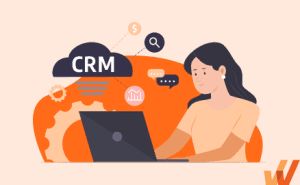Ultimate Guide to Sales Training (+Types, Benefits, Examples)
- Published:
- Updated: August 28, 2024


The average organization spends $2,020 per salesperson on sales training programs each year, according to Highspot’s State of Sales Training report. That’s around 2 – 5% of the average company’s salary budget.
For all that training spend, the overall results from most sales training initiatives are poor. According to a study from ES Research, 90% of all sales training initiatives built no habits, and salespeople have no lasting impact on their behavior.
Forbes estimates that 55% of salespeople lack essential soft sales skills such as empathy, drive, and motivation. Buyers notice this, with 82% of B2B decision-makers saying they think sales reps are unprepared.
However, with a practical, well-planned learning and development (L&D) strategy, sales training can have an ROI as high as 353%—or up to $4.53 for every $1 a company spends on sales development programs.
In this article, we’ll discuss the importance of enterprise sales training strategies, components sales training programs, examples of online courses, and breakdown the best sales training software.
What Is Sales Training?
Sales training enables sellers with the knowledge and skills they need to increase productivity, improve performance, provide better customer service, and ultimately sell more.
This includes general sales training on selling best practices, soft skills training on communication-based skills, product knowledge training, CRM user training, and organization-specific training on sales playbooks and processes. Sales leaders must also provide continuous training opportunities through seller upskilling to overcome skills gaps.
Types of Sales Training
Sales training can be broken down into six fundamental types of training: best practices, process, product knowledge, CRM, soft skills, and industry-specific training. Let’s explore each below.
1. Sales best practices training
Sales best practices training focuses on equipping sellers with proven strategies and techniques that top performers use to succeed.
It includes training on sales prospecting, objection handling, closing techniques, and maintaining strong customer relationships. The goal is to build fundamental knowledge of sales best practices and principles that drive consistent sales performance. This is particularly important of professionals new to sales, like BDRs and SDRs.
2. Sales process training
Sales process training breaks down the specific steps involved in the sales cycle, from lead generation to closing a deal. It provides a clear framework for sales reps to follow, ensuring they understand how to effectively guide prospects through the buying journey. This training helps standardize sales activities and improves overall efficiency and effectiveness.
While sales best practices training can be applied to any organization, sales process training is contextual to the specific company a seller works for. Consider the contextual sales cycle and custom-build sales flows.
3. Product knowledge training
Product knowledge training enables sellers to learn about their products and services. It covers features, benefits, use cases, and competitive advantages, empowering sellers to address customer inquiries and position your product as the best solution. Comprehensive product knowledge is essential for building credibility and trust with prospects, allowing sellers to close more deals.
4. CRM training
CRM user training enables reps with the knowledge of sales workflows to complete their sales tasks. It teaches sales teams how to effectively use their CRM to manage customer interactions, track sales activities, and analyze performance data. This training ensures that reps are comfortable navigating the CRM system, leveraging it to its full potential, and maintaining accurate and up-to-date records.
5. Soft skills training
Soft skills training covers interpersonal skills essential for building customer rapport, such as active listening, communication, empathy, and negotiation. It also teaches advanced communication techniques, empathy training, and conflict resolution. These skills are vital for sales reps to connect with prospects personally, understand their needs, and tailor their approach to different personalities, ultimately leading to more successful sales outcomes.
6. Industry-specific sales training
This training provides sales reps with an in-depth understanding of the specific industry they are selling into. It covers industry trends, key challenges, terminology, and relevant regulatory considerations to their target market. By understanding the unique needs and pain points of their industry, sales reps can position their offerings more effectively and gain credibility with prospects who are experts in their field.
5 Benefits of Sales Training You Should Know About
A 2019 McKinsey global survey of ~1,200 respondents across various sales roles found that fast-growing companies were 80% more likely to achieve commercial results from sales training programs when compared to slow-growing companies.
We’ll get into what influenced those results but across the board, sales training programs have a place in every organization and come with several benefits.
1. Boost revenue
According to Salesforce, “80% of high-performing sales teams rate their sales training process as outstanding or very good.” Good training programs have a direct and positive impact on sales.
Take Bluebeam Software for example. They created an online learning program for their resellers broken up into three levels of expertise. Of 2800 external salespeople who completed the first level of training, each reseller doubled their sales on average. Those who completed all three levels saw a whopping 400% business growth.
2. Minimize busywork
Pipedrive’s State of Sales Report 2020-2021 found that only 53% of salespeople spend most of their day selling i.e. 47% do not report selling as their main activity.
Admin, lead generation, and prospecting eats up most of their time. So training teams to automate these tasks with the help of a CRM or a better process for qualifying prospects means you free up their day to do what’s going to bring immediate and more value—selling.
According to Automate.io, sales teams can save 5 hours every week by automating day-to-day tasks.
3. Increase employee satisfaction
A 2020 study conducted by ValueSelling Associates and Training Industry found that sales training goes beyond getting sales results; it impacts the bottom line by improving employee satisfaction, motivation, retention, company culture, and enterprise agility.

4. Adopt a buyer-first philosophy
The pandemic changed B2B customers way faster than sellers, hastening what’s known as the Buyer First approach. It quite literally means to put the buyer first by offering complete transparency and empowering them to make an informed decision

This approach has a ton of merit. According to LinkedIn’s State of Sales 2021 report, 72% of top performers aka sellers who met quota by 125% always put buyers first.
But there are barriers to building a buyer-first organization—lack of the right skills, inadequate coaching, and limited commitment to training.

This means the opposite holds true. A vigorous approach to training can make way for a buyer-first approach leading to not only salespeople meeting their quotas but absolutely crushing it.
5. Build buyer trust
LinkedIn’s Sales Report also found that 89% of buyers do business with salespeople who are trusted advisors.
And 51% of top performers surveyed by Sales Insight Lab in their Sales Data Study 2021 refer to themselves as experts in their field.
Given how buyers are inclined to purchase from an expert they can trust, sellers need to know the product inside out to avoid misrepresenting facts, improve their soft skills and present themselves as an expert.
5 Components of a Successful Sales Training Program
Suzie Andrews, CEO and President of Sandler Training, shares, “The single most underutilized resource in any company is the sales leader.”
Andrews recommends sales leaders align themselves to make sure they’re efficiently managing their teams.
“Simply said, how much time are they spending one on one with their reps? Try weekly one-on-one meetings, ride alongs, pre-call, and post-call planning, ad-hoc coaching, and role play.”
Training leaders is the first step to building a successful sales training program. McKinsey’s survey clearly points to the difference in sales training at good and great companies.

1. Ditch the curriculum-based approach
Remember when we talked about why fast-growing companies were more likely to achieve results over slow-growing companies? McKinsey found that one of the main reasons for this was a certification-based approach.

McKinsey recommends focusing on 4 key aspects to build a world-class certification program:
- Design a needs-based curriculum
- Focus on measurable and visible impact
- Consistent but personalized learning experiences
- Introduce experiential learning
Leslie Venetz, Founder of Sales Team Builder, shares, “The most successful sales trainings are hardly trainings at all, instead, they are interactive, engaging, and often collaborative sessions. The data shows that traditional classroom-style training does not work. With short attention spans, the rise of gamification, and this largely virtual world we are navigating, historical notions of what good looks like for training need to be reexamined.”
Venetz follows the 70-20-10 learning methodology meaning that only 10% of learning should be done in traditional classroom-style training. The remaining 90% should be done through mentorship, coaching, and hands-on experience.
2. Provide on-demand, continuous support
Sales move quickly, and sellers need to be able to work through hurdles quickly. Provide technical customer support in real-time without your sales team having to raise support tickets and wait for long periods of time for resolution of their queries.
With Whatfix’s intuitive interface, users are able to get seamless on-demand, self-service on even the most complex features. Boost user performance by providing embedded in-app performance support to answer queries instantly.
3. Allow sales people to learn in the moment of need
Learning on the go is a natural and unavoidable aspect of sales. Empowering your sales reps with the ability to learn in the moment allows them to perform any task from start to end successfully. This reduces users’ confusion and their dependence on managers or support teams.
Whatfix’s just-in-time performance support software is always available to aid employees in performing critical tasks at the moment of need.
4. Don’t limit the training to sales teams
Selling is never a siloed effort. Anyone in a customer-facing role or with the opportunity to influence customer decisions should be trained.
Marketing, sales, presales, customer success, support, product, and executive teams all have to be on board. A program that fails to do that only drives the wedge further between sales and other teams.
5. Invite buyers to participate
Empathy is an essential skill for salespeople to adopt the buyer first approach. Getting buyers to share their purchase experience, pain points and the value the platform provides is a good way to help sales teams put themselves in their shoes and understand exactly what closes more deals.
Best Sales Training Courses & Programs
If you’re looking for additional sales training courses and certification programs for your sales team, here are nine fantastic programs. For each program, we’ll share its location, focus, and cost.
1. HubSpot's Inbound Sales Training
- Location: Online
- Focus: Inbound sales methodology
- Price: Free
Intended for sales teams and inbound marketers, Hubspot’s inbound sales course covers how to sell with integrity and explains the entire process from prospecting to developing personalized sales enablement decks.
2. Smart Calling Program
- Location: Online
- Focus: Sales calls
- Price: $895 for the first attendee and $795 for every additional attendee from a company
- Intended Audience: Inside or field sales professionals
The Smart Calling College program zeroes in on sales calls for reps who rely on it as their primary communication method. It teaches salespeople how to engage with buyers, resolve objections, book a follow-up call, and add value to every interaction.
3. ASLAN Training
- Location: Online
- Focus: Driving receptivity
- Price: Available on request
ASLAN Training creates hyper-customized sales development plans for every organization. Its instructor-led workshops and digital learning modules help sellers train and complete necessary certifications. To ensure ongoing development, ASLAN focuses on sustainable tactics. ASLAN also offers a field sales training program.
4. Impact Sales Team Training
- Location: Online, on-site or both
- Focus: Varies
- Price: Varies
Like ASLAN, The Brooks Group offers thoroughly customized solutions via its IMPACT program. They typically spend 3-12 weeks learning about your business through ride-alongs, field observations, account reviews, interviews, audits, and assessments but promise a permanent improvement.
5. Pearl Lemon Sales Training
- Location: Online, on-site or both
- Focus: Helping field sales reps close deals in person and virtually
- Price: Available on request
Pearl Lemon offers a bespoke training solution for field salespeople who need to pivot to a virtual setting. The program lays out a roadmap for a buyer-focused interaction and dives into the specifics of what managers and salespeople will learn before, during, and after each session. It also includes a long-term strategy.
6. GoSkill's Customer Service Training
- Location: Online
- Focus: Customer service to retain customers
- Price: 7-day free trial. Available here
Of the many courses GoSkills offers, the customer service training program particularly benefits reps. The self-paced course can be personalized and offers unlimited tests and quizzes. It helps reps understand the underlying psychology, create positive interactions, and develop loyal relationships with customers through empathy.
7. Dale Carnegie’s Attitudes for Service Workshop
- Location: Online
- Focus: Becoming a customer advocate
- Price: $199
Dale Carnegie’s Attitudes for Service Workshop helps reps take 100% responsibility for themselves and the attitude they convey. Reps can learn how to maintain a friendly, low-pressure high service environment while making sure they’re productive and service-oriented. The course teaches participants how to incorporate the four drivers of customer service to build relationships, and apply attitude control principles and conversational language to keep the interactions low pressure.
8. Franklin Covey’s Sales Leader Base Camp
- Location: Online
- Focus: Helps sales leaders boost their performance
- Price: Available on request
Franklin Covey’s Sales Leader Base Camp work session helps leaders identify breakthrough potential, coach to results using G.R.O.W.®, a proven performance improvement methodology, and introduces the concept of effective time management. Franklin Covey’s seasoned sales coaches work directly with sales leaders to implement processes and help leaders upgrade their own skills.
9. New Velocity's Sales Leadership Development Course
- Location: Online
- Focus: Help new leaders gather expertise
- Price: Available on request
New Velocity has two courses to enable sales leadership development: managerial courage and the Sales and Leadership Development Accelerator Series. Both are designed for leaders who were earlier salespeople and need to develop the skills needed to lead, hire, manage, coach, and train others.
Best Sales Training Software
Sales training software enables sellers to learn best practices, learn how to use CRM systems, improve soft skills, and more. They can teach sellers about their ideal buyers, how to ask engaging questions, hold better conversations, and educate prospects on a product or service.
These platforms also provide salespeople with in-app guidance on all enterprise sales software such as CRM platforms, sales enablement tools, outreach tools, and more – all providing learning in the moment of need to give sales team members the sales documentation they need, right when they need it.
Here are the best sales training software based on G2 and Capterra ratings and user reviews:

1. Whatfix
- G2 Rating: 4.7/5
- Capterra Rating: 4.7/5
- Pricing: Available on request
Whatfix is a digital adoption platform that is designed to help enterprises onboarding, train, support, and enable their employees to best adopt digital sales applications and processes with in-app guidance and on-demand support.
With Whatfix, organizations are empowered to use a no-code editor to create UI elements that overlay on top of any software application or digital tool salespeople are using, from Salesforce to Gmail. Companies can build in-app tooltips, task lists, interactive walkthroughs, step-by-step instructions, alerts, nudges, and self-help wikis – all embedded into your digital workplace.
Whatfix empowers L&D leaders to:
- Create role-based walkthroughs that interactively coach and support your salespeople based on their role or needs.
- Onboard new sales people to your sales processes and applications to get them up to speed faster.
- Training checklists that guide new reps step-by-step and gamifies the training process.
- Capture analytics and data to understand the levels of product, process, and feature adoption across your sales team.
- Gather real-time employee feedback to help you understand how effective your training programs are and how your team members are reacting to them.
Whatfix’s in-app guidance platform acts like a canvas on top of the applications you already use so that your SDRs, AEs, and customer reps can access prerecorded explainers, guides, and articles right inside your CRM – all working to enable your sales team to get the most out of their sales applications and digital processes, and building overall digital dexterity.

2. Mindtickle
- G2 Rating: 4.7/5
- Capterra Rating: 4.8/5
- Pricing: Available on request
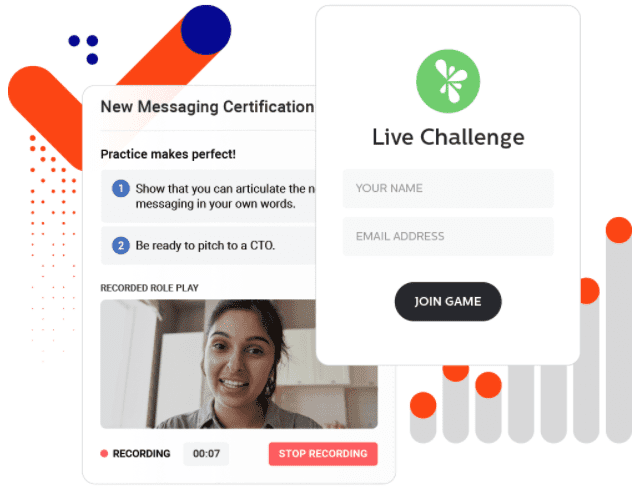
While Mindtickle isn’t just a sales training platform, we’ll cover only the features that enable training. The platform allows you to provide individualized training, practice, and reinforcement for every salesperson and coaches salespeople to improve the skills that prevent them from closing deals.
Main Features:
- Identify real-time skill gaps with Mindtickle’s Readiness Index
- Stop skill erosion with AI-powered reinforcements
- Drive teamwork and knowledge sharing with cooperative challenges
- Find content easily with Asset Hub

3. Allego
- G2 Rating: 4.5/5
- Capterra Rating: 4.2/5
- Pricing: Available on request

Allego’s Sales Training solution is designed to deliver impactful customized training to ramp up reps to productivity fast. The platform helps increase engagement, deliver training when reps need it and foster a collaborative spirit.
Main Features:
- Deliver personalized, continuous training from anywhere via a smartphone
- Capture best practices and customer insights
- Share strategies and practices top performers use
- Assess competencies, and deliver targeted sales training
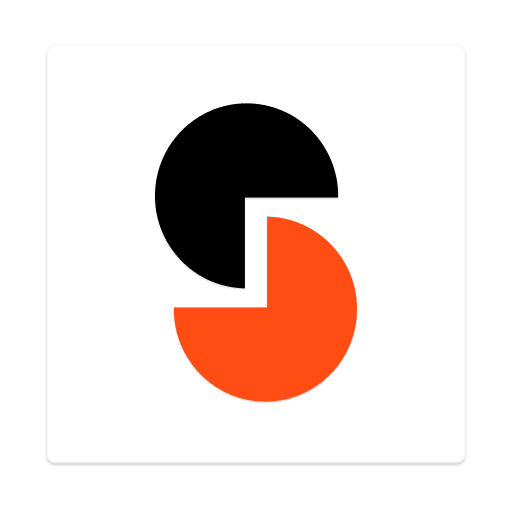
4. Lessonly by Seismic
- G2 Rating: 4.7/5
- Capterra Rating: 4.7/5
- Pricing: Available on request

Lessonly by Seismic is a training, coaching, and enablement solution that helps teams ramp up faster, deliver effective feedback, and constantly improve. The platform allows you to visualize training engagement, see assessment results and identify skill gaps. Lessonly integrates with your existing tech stack. Think Zendesk, Salesforce, and Chrome.
Main Features:
- In-person training along with the software capabilities
- Enables remote, on the go training via mobile-friendly experience
- Assign lessons or offer on-demand training
- Drag-and-drop builder to create training material
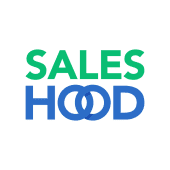
5. SalesHood
- Review Rating: 4.6 out of 5 stars
- Pricing: $75 per user per month
SalesHood is a guided selling platform designed to help sales leaders store their training content in a single library, grade their salespeople’s performance using personalized metrics, and compel managers to coach their teams consistently with recurring role-play sessions, and reusable coaching template.
At $75 per user, per month, an organization with 100 salespeople will be spending $90k on licenses each year, and that’s before you factor in add-ons such as SalesHood’s ‘Getting Started’ package, which costs $10k apiece
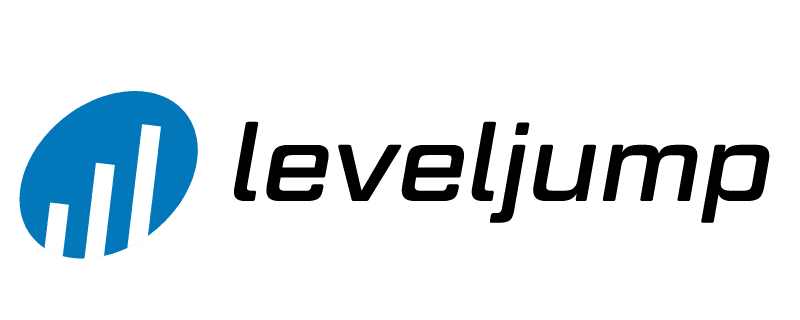
6. LevelJump
- Review Rating: 4.4 out of 5 stars
- Pricing: NA – contact for pricing
LevelJump is an outcome-based sales enablement platform designed to coach salespeople inside their CRM. Salesforce acquired LevelJump in September 2021. By all indications, the product’s development will only focus on the Salesforce ecosystem. This is not a great sign if you use another enterprise CRM or sales-related software. You can find LevelJump on the Salesforce AppExchange.

7. Lessonly
- Review Rating: 4.7 out of 5 stars
- Pricing: Paid tier starts at $200 per month
Lessonly by Seismic is an employee training platform designed to help managers ramp new reps quickly with interactive coaching programs, on-demand content, and role play features designed to help your salespeople practice their selling skills and get graded automatically.
You can use Lessonly to create customized coaching programs on a cohort basis or for individual reps. Their platform integrates with mainstream enterprise CRM and related tools such as Salesforce, HubSpot, and Outreach.

8. WorkRamp
- Review Rating: 4.4 out of 5 stars
- Pricing: $25 – $35 per user, per month
WorkRamp is an LMS that helps sales managers coach reps with onboarding bootcamps, self-service content libraries, and live practice sessions that are graded automatically. WorkRamp can be used to create, curate, manage, and deliver sales training courses, from onboarding and general training, to compliance and customer training.
Create an engaging sales training experience with Whatfix
American businesses spend $70+ billion on sales training annually, but their salespeople lose 87% of whatever they learn within 12 weeks. On the other hand, Salesforce reports that 80% of high-performing rate their training process as outstanding.
If we combine both metrics, we can conclude that there is a direct relationship between effective sales training and better sales performance.
Whatfix helps enterprises design training and coaching programs that your salespeople can access inside your CRM. That way, they can access helpful content on-demand instead of sitting through hour-long webinars.
You can learn more about Whatfix for sales teams, and see it in action, here
Request a demo to see how Whatfix empowers organizations to improve end-user adoption and provide on-demand customer support
Thank you for subscribing!


